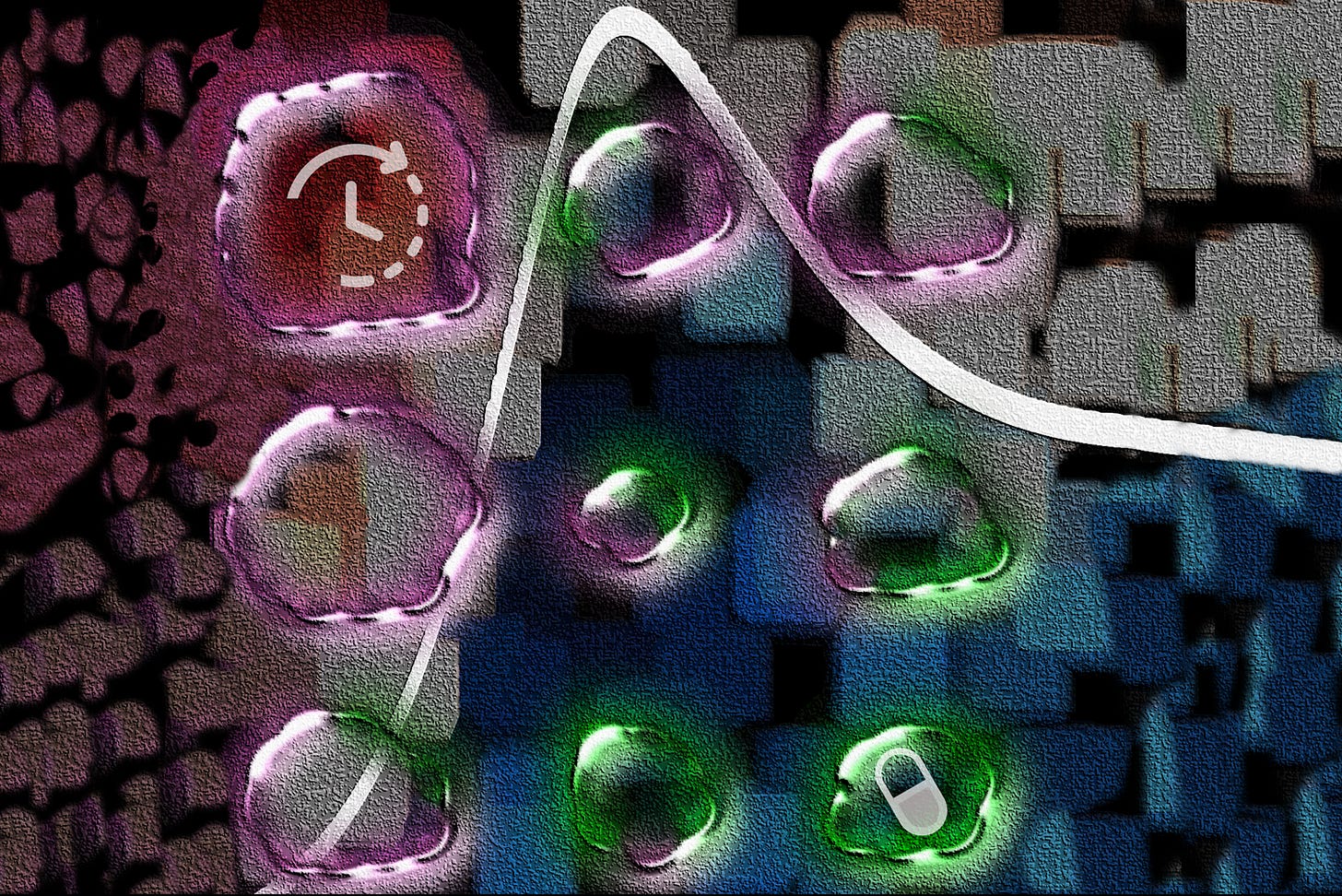This week in MathOnco 343
Models of ecDNA, epithelial competition, fluctuating methylation, oncolytic viruses, and more…
“This week in Mathematical Oncology” — Sept 11, 2025
> mathematical-oncology.org
From the editor:
Today’s issue contains models of ecDNA, epithelial competition, fluctuating methylation, oncolytic viruses, and more… In other fun news, I accomplished a life goal last week :)
Enjoy,
Jeffrey West
jeffrey.west@moffitt.org
Systems biology successes and areas for opportunity in prostate cancer
Michael V Orman, Laura S Graham, Scott D Cramer, James C CostelloRecovery of human upper airway epithelium after smoking cessation is driven by a slow-cycling stem cell population and immune surveillance
Hugh Selway-Clarke, Kate H. C. Gowers, Vitor H. Teixeira, Calum Gabbutt, Carlos Martínez-Ruiz, Ahmed S. N. Alhendi, Benjamin D. Simons, Benjamin A. Hall, Nicholas McGranahan, Anob M. Chakrabarti, Sam M. Janes, Adam PennycuickExtrachromosomal DNA–Driven Oncogene Spatial Heterogeneity and Evolution in Glioblastoma
Imran Noorani, Magnus Haughey, Jens Luebeck, Andrew Rowan, …, Vineet Bafna, Weini Huang, Paul S. Mischel, Charles Swanton, Benjamin WernerAgeing, immune fitness and cancer
Melissa Dolan, Kendra A. Libby, Alison E. Ringel, Peter van Galen & Sandra S. McAllisterNew Approach Methodologies: What Clinical Pharmacologists Should Prepare For
Yanguang Cao, William PolacheckEpithelial competition determines gene therapy potential to suppress Fanconi Anemia oral cancer risk
Hunter L. Colegrove, Raymond J. Monnat, Alison F. FederFluctuating DNA methylation tracks cancer evolution at clinical scale
Calum Gabbutt, Martí Duran-Ferrer, Heather E. Grant, Diego Mallo, …, Chris P. Barnes, Darryl Shibata, José I. Martin-Subero, Trevor A. GrahamExtrachromosomal DNA–Driven Oncogene Spatial Heterogeneity and Evolution in Glioblastoma
Imran Noorani, Magnus Haughey, Jens Luebeck, Andrew Rowan, …, Weini Huang, Paul S. Mischel, Charles Swanton, Benjamin Werner
Stacked Waves and Qualitative Analysis of an Oncolytic Virus-Immune Model
Negar Mohammadnejad, Thomas HillenData-driven dynamic modelling identifies polyploidisation as key process in cell cycle progression upon DNA damage
Elsje J. Burgers, Muriel M. Heldring, Lukas S. Wijaya, Tamara Y. Danilyuk, Jiahang Su, Sebastiaan J. Molenaar, Peter Bouwman, Sylvia E. Le Dévédec, Bob van de Water, Joost B. Beltman
The newsletter now has a dedicated homepage where we post the cover artwork for each issue. We encourage submissions that coincide with the release of a recent paper from your group. This week’s artwork:
Based on the preprint: Optimal Treatment for Drug-Induced Cancer Persisters Involves Release Periods and Intermediate Drug Doses published in PRX Life
Artist: Mattia Corigliano (@MCorigliano_, @SPCGgroup)
Caption: Optimizing treatment schedules for drug-induced cancer persisters. Targeted therapies can trigger a reversible drug-tolerant state in subpopulations of cancer cells, reminiscent of bacterial persistence. Using mathematical modeling adapted from this framework, we explored intermittent treatment protocols aimed at minimizing long-term population fitness. Our results show that carefully timed recovery periods and intermediate drug doses can outperform continuous therapy, shaping population dynamics in nontrivial ways and defining regions of success and failure within a clinically relevant parameter space. The cover image illustrates how treatment outcomes depend jointly on drug concentration and recovery duration, highlighting the counterintuitive prediction that intermittent, moderate dosing can be more effective than continuous high-dose therapy.
Visit the mathematical oncology page to view jobs, meetings, and special issues. We will post new additions here, but the full list can found at mathematical-oncology.org.
1. Jobs
Current subscriber count: 2,365









